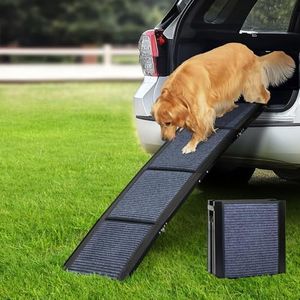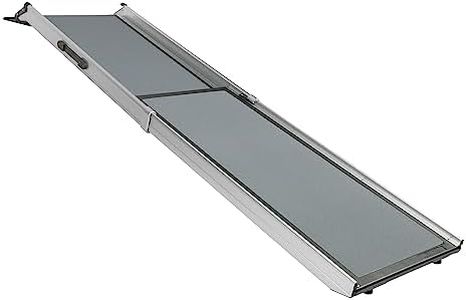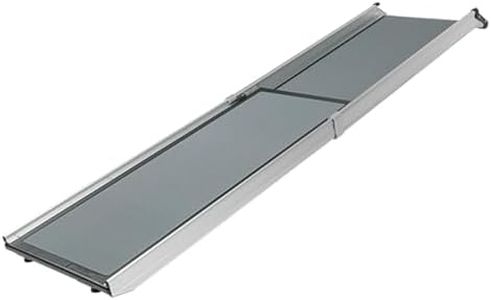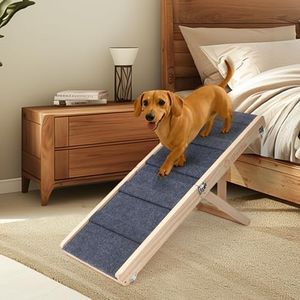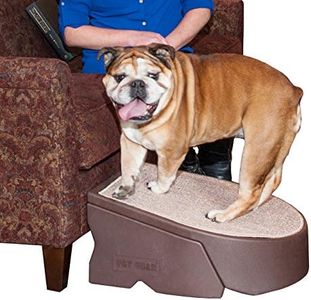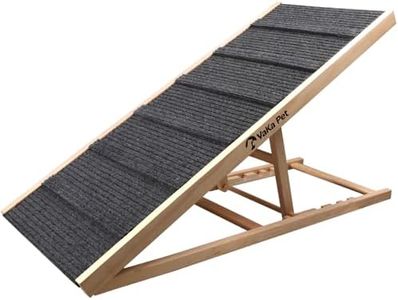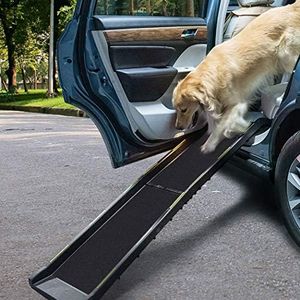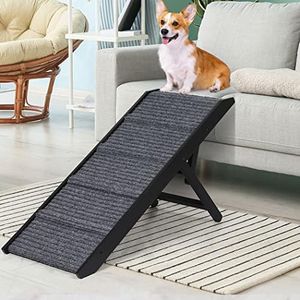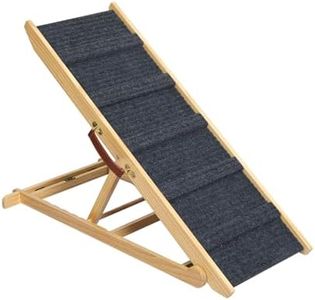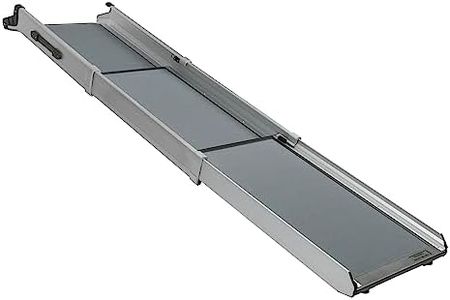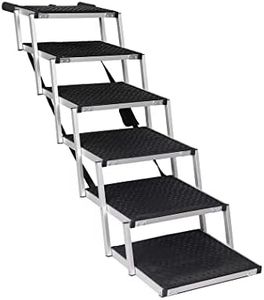We Use CookiesWe use cookies to enhance the security, performance,
functionality and for analytical and promotional activities. By continuing to browse this site you
are agreeing to our privacy policy
10 Best Dog Ramps
From leading brands and best sellers available on the web.Buying Guide for the Best Dog Ramps
Choosing a dog ramp is all about making life easier and safer for your pet, especially if they are older, injured, small, or need help getting into cars, furniture, or beds. The right ramp can prevent injuries and offer comfort for both you and your dog. To pick the perfect fit, you'll want to think about your dog's size, where you'll use the ramp, and how often you'll need to move or store it. Focusing on the key features will help you narrow down the options to find one that matches both your dog's needs and your lifestyle.Ramp LengthRamp length determines how steep the incline will be for your dog to walk up or down. A longer ramp usually means a gentler slope, which is better for dogs with mobility issues or small breeds. For short heights, like getting onto a couch, a shorter ramp might be sufficient. If you're using it for a car or high bed, a longer ramp will be safer and easier for your dog to use. Consider where you'll place the ramp and measure the height it needs to reach, then choose a ramp long enough to provide a comfortable incline for your pet.
Ramp WidthRamp width affects how comfortable and secure your dog feels when using the ramp. Wider ramps offer more stability, especially for larger or anxious dogs, while narrower ramps can be more compact for storage but might not be suitable for big breeds. If your dog is large or tends to sway when walking, go for a wider ramp. If you have a small dog or limited storage space, a narrow ramp could work as long as it matches your dog's size.
Weight CapacityWeight capacity is the maximum amount of weight the ramp can safely support. It's crucial because using a ramp that can't handle your dog's weight could cause accidents. Manufacturers list this specification clearly; make sure to check your dog's weight (and consider the heaviest pet likely to use it) to pick a ramp that exceeds this number for safety and durability.
Surface Material and TractionSurface material and traction help prevent your dog from slipping. Look for ramps with non-slip surfaces like carpet, rubber, or textured materials. This is especially important for older dogs or those with joint problems as a slippery ramp could cause falls or injuries. For indoor use, softer surfaces might be more comfortable, while outdoor use benefits from easy-to-clean, weather-resistant textures. Think about where the ramp will be used and how much grip your dog needs to pick the right surface.
Portability and Folding DesignPortability and folding design determine how easy it is to move or store the ramp. If you often travel or need to move the ramp between rooms or vehicles, choose a lightweight, folding model that fits easily into your car or storage space. For a fixed location, a heavier, non-folding ramp might offer more stability. Pick a design that fits your routine—if you'll need to put the ramp away often, portability should be a priority.
Height AdjustabilityHeight adjustability means you can change the height or incline of the ramp to suit different situations, like varying furniture or vehicle heights. Adjustable ramps are versatile and can grow with your pet's needs or as you use them in new places. If your needs are constant, a fixed ramp is simpler, but for changing environments, adjustable height is a practical feature.
